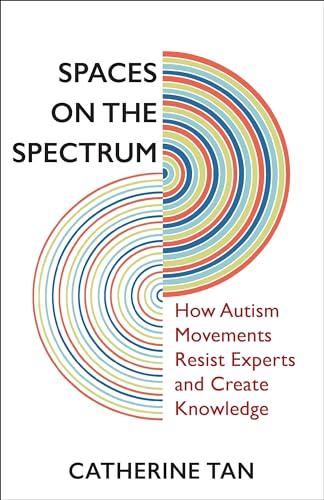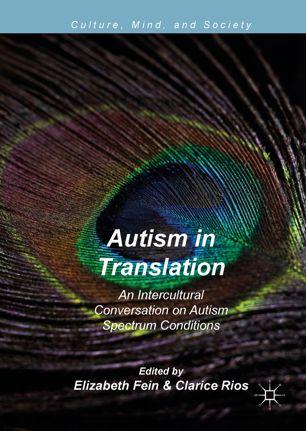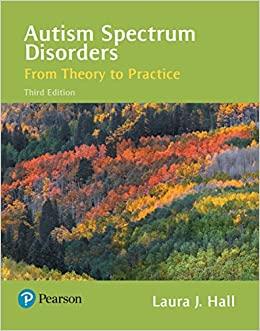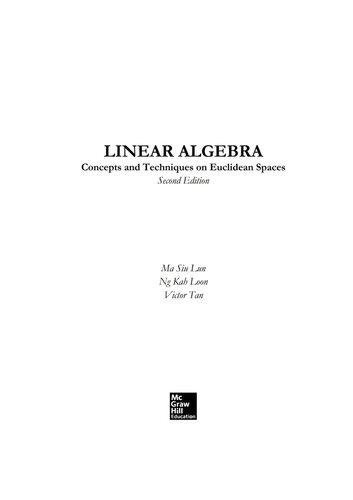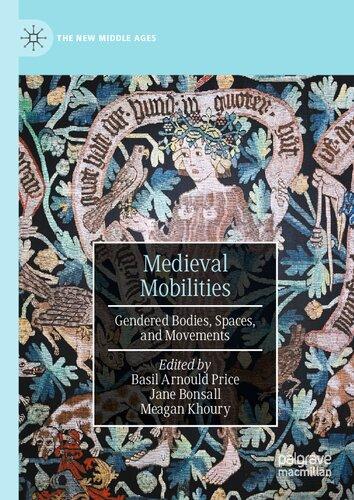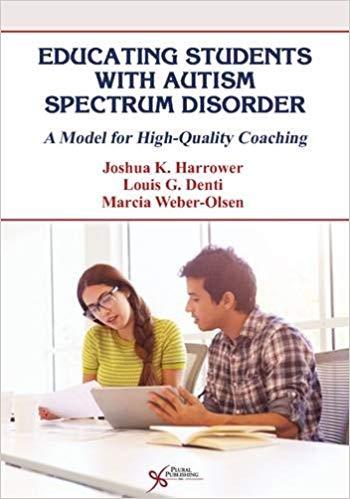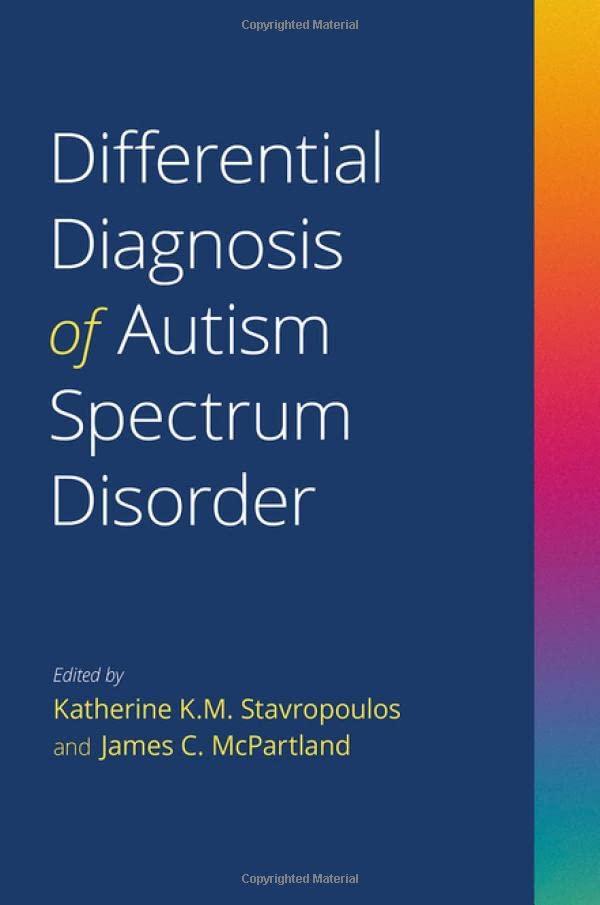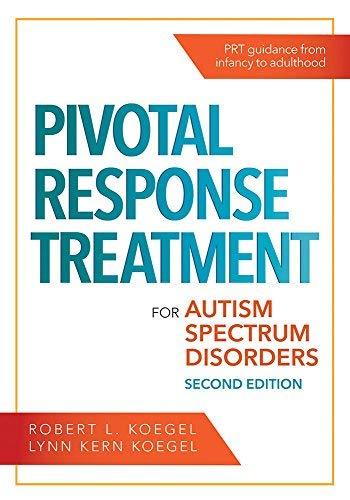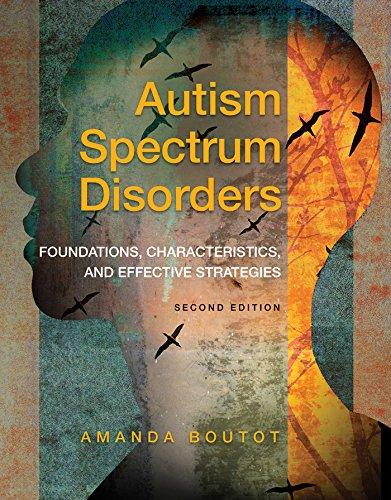PREFACE AND POSITION
Ianswered a Craigslist ad online in 2006. Stories that start this way usually have grisly endings; not in this case fortunately. The ad was posted by a couple in their early forties—Danuta and Allan—in urgent need of a babysitter for their autistic sixyear-old son, Mickey (these are all pseudonyms). I was in my junior year of college and needed a flexible, part-time job. I met them at their stylish home located in Hillcrest, one of the most fashionable neighborhoods in San Diego at the time. It was decorated with French country decor. Danuta proudly shared that the light fixtures were alabaster, the paint on the walls was by Ralph Lauren, and the end table with floral inlay was an early-twentieth-century replication of a nineteenth-century design. They needed someone to start immediately because in a few days they were going to go to Poland. At that time, everything I knew about autism came from the movie Rainman and a Time Magazine article from 2002. But they judged me to be a nice and responsible enough stranger to trust with their only child, so I was promptly hired to stay with Mickey at night after the daytime nanny went home. To keep their minds at ease, I think they had a camera hidden somewhere in the house (I found the device’s packaging a couple of weeks later). After
x Preface and Position
Danuta and Allan returned from their trip, I stayed on and continued babysitting Mickey for another two years, ten to fifteen hours each week.
Mickey had bright eyes and moppy brown hair. Allan affectionately called him Squiggles. Mickey would laugh uncontrollably when I pulled him around the spacious house on a blanket or swung him around by his arms in the backyard. He rarely cried or showed signs of discontent—except briefly once when I was pushing him on the swing and he flew off (he was fine). He had a sophisticated palate compared to the typical American child who only eats beige things. Mickey required a lot of support. I remember him cycling through different behavioral therapists; one of them rewarded him with gummy bears and another therapist pressed a clicker whenever he did something correctly. Danuta and Allan laughed uneasily, saying it was too much like animal training. Mickey did not have any verbal language and possessed limited sign language. He avoided eye contact and stared into the distance. If left alone, he could spin the wheels of his toy cars and the bobbles of his rattle for hours, rhythmically cooing to himself. Sometimes he would strain his face, furrow his brows, and shake his toys in frustration. When we lounged around with nothing to do, I sometimes sang to him Belle and Sebastian’s “Judy and the Dream of Horses.” I took him everywhere—diners, parks, the zoo, the annual pride parade, and my field site when I was working on my senior thesis. He was easy to manage, in the sense that he did not wander off or selfinjure, but I had trouble interpreting the subtleties of his communication. I just knew he enjoyed eating and being swung around.
I also spent a lot of time with Danuta. She worked part-time as a piano teacher and was often at home doing chores and gardening as I watched Mickey. Danuta was always affectionate with him even though he rarely reciprocated, and she was patient
Preface and Position xi
even when he yanked fistfuls of her hair. Over time, Danuta and I became friends, socializing outside of my work hours. She wistfully said that Mickey verbally speaks to her when he appears in her dreams. She would get gloomy when thinking about how people felt sorry for her and her son. She could not help but speculate why Mickey is autistic. One evening, she confessed that before she knew she was pregnant, she went into a jacuzzi— Could that have been the cause? Another day, while she was putting away the laundry, she told me that they recently learned that Allan had an aunt who was intellectually disabled, suggesting Mickey’s autism might have been inherited. To Danuta and Allan, Mickey represented so many unknowns about the past, present, and future. They worried a lot about what would happen to Mickey when he got older: Who will love him when they die? Later, some of their worries were put slightly at ease with the birth of another baby boy, the future conservator. Micky was just one child. I never met another autistic child like him. I learned very little about autism, the condition, from working with him actually. However, being part of his and his parents’ lives, I learned to appreciate the complicated relationship between autism and the non-autistic world. I cannot speak for Mickey or his experiences, but as his babysitter, I knew what made my job easier and what made it harder. My job felt easier when the people around us were patient and forgiving. My job felt harder when I could sense strangers pitying him. Of course, at the end of the day, I was able to just step away—this was my privilege. I am writing this book as a neurotypical person who was introduced to the world of autism through the kindness of autistic people, parents of autistic children, and practitioners. For years, they welcomed me into their lives and entrusted me with their stories. My intent (and hope) is that this book will honor the time my participants so generously shared.
ACKNOWLEDGMENTS
Iwould like to thank the participants of my study for sharing their stories and inviting me into their communities. Without them, there would be no book to write.
I cannot believe it took ten years to go from institutional review board approval to publisher approval. I really hope my next book does not take this long. Anyway, a lot of life happened over the last decade. During this time, so many people have supported me and this project.
Thank you to the team at Columbia University Press for making this book real. I especially want to thank Eric Schwartz for his support, feedback on chapters, and responsiveness— honestly, I do not know anyone who responds to emails as quickly as him. I am also especially thankful to my anonymous readers. Their suggestions and comments have made this book so much stronger and better. Readers, thank you for your time and invaluable insights.
Thank you to Allison Van Deventer for editing my book proposal and manuscript. I cannot wait to see your own book (coauthored with Katelyn E. Knox), The Dissertation-to-BookWorkbook: Exercises for Developing and Revising Your Book Manuscript, on the shelf soon! Also, thank you to Alana Dunn for organizing my bibliography.
I am beyond thankful to Jennifer Reich, who has carefully read this book more times than anyone else has or ever will. She has been there since this book was a mere proposal. I cannot thank you enough for your brilliant and incisive feedback. I have long admired your work and am so honored to have your guidance through this process. You should be getting a stained-glass squirrel lamp in the mail any day now—please accept this as a token of my appreciation.
Thank you, Miranda Waggoner, for your detailed and thoughtful comments on the full book manuscript. I was especially moved by your enthusiasm. Preparing a book for publication is a little scary, but your kind words inspired confidence.
I would have never pursued an academic career in sociology had it not been for the encouragement and advising I received from Christena Turner and Jeff Haydu at the University of California, San Diego, where I completed my bachelor’s degree. I took my first sociological methods course with Christena in 2006 and knew then that this is what I wanted to do with my career. Afterward, I completed my senior thesis with Jeff, which allowed me to expand and develop the project I started in Christena’s class. Since graduating from the University of California, San Diego in 2008, I get to see Christena and Jeff at least once a year. I feel so deeply fortunate to have the both of them in my life as mentors and friends.
I am thankful to my advisor and mentors at Brandeis University, where I completed my PhD. Peter Conrad, Sara Shostak, David Cunningham, and Laura Miller have each helped me become a stronger and more confident scholar. Peter Conrad, my advisor and dissertation chair, inspired this study after we coauthored a book chapter comparing the online presence of autism advocacy groups. Peter has been a source of inspiration and encouragement. Aside from teaching me how to think like a
Acknowledgments xv
sociologist, Peter also modeled a healthy and balanced academic life. I am so honored to have been one of his advisees. From the Qualifying Portfolio to papers for journal submission, I turned to Sara for her sharp insights and critiques. When I could not see the forest for the trees, she was the one who pushed me to ask, “What is this a case of?” Throughout my graduate career, Laura offered constructive though brutal honesty on my work, provided extremely thorough remarks and edits on every piece of writing I sent her, and held me accountable—and for all that, I am so grateful to have had her as a mentor. On a more personal level, I consider Laura a very good friend. She is both wise and fun. I am sure that when this book comes out, we will celebrate over tiki cocktails.
I want to thank Gil Eyal, Thomas Mackie, and Laura Senier for providing opportunities for me grow as a sociologist. During my master’s program at Columbia, I worked with Gil on a small study that examined an autism-only school; this resulted in my first published paper. I learned so much more about qualitative research from that project than from any methods course. Even though I have not been his student since 2010, Gil has always been so generous with his time and mentorship. He also gave me invaluable feedback on this manuscript at my book workshop. Since our time together at Brandeis, Tom has been both a friend and a role model. Toward the end of my graduate program, Tom brought me on as a research associate to work on the ABCD Project, a collaboration between multiple universities in Boston. That experience taught me how to work within a team and helped hone my academic writing skills. In my last year of graduate school, I got to work with Laura Senier. I eagerly welcomed this opportunity to explore a topic with which I was previously unfamiliar. I also appreciated Laura’s mentorship style, which was full of enthusiasm and humor.
I would like to thank my community at Vassar College. I am so lucky to be part of this vibrant sociology department with John Andrews, Pinar Batur, Light Carruyo, Abby Coplin, Diane Harriford, Seungsook Moon, Leonard Nevarez, Erendira Rueda, and Gina La Fata—thank you for being wonderful, supportive colleagues. I am incredibly appreciative of Chris White, who participated in my book workshop and provided important feedback. Thank you, Marty, for occasionally popping into my office to ask how the book is coming along and cheer me on. Thank you to the dean of faculty, Bill Hoynes, and president, Elizabeth Bradley, for taking an interest in my research and reading my articles when they are published. It means so much to me. Across Vassar’s campus, I am so grateful for the friendships I have made so far: Liz Lastra, Laura Haynes, Lee Kennedy-Shaffer, Katelyn Butler, Zach Cofran, Jess Beck, Louis Römer, Johanna Römer, April Beisaw, Jackie Villadsen, Payton Small, Jasmine Syedullah, Justin Patch, Osman Nemli, Anna Gommerstadt, Katie Gemmill, Amy Chin, Gretchen Lieb, Elizabeth Salmon, and so many others. They are not only colleagues but trivia teammates, boardgame opponents, hiking partners, writing buddies, stained glass classmates, and dates to the Raccoon Saloon.
I would like to thank the many other scholars who have supported me and my work over the last several years, including Phil Brown, Linda Blum, and Valerie Leiter.
I have dedicated this book to Mom and Ba. Both my parents, Mão Tân and Bích Vân Đ , worked incredibly hard and made many sacrifices to give my sister and me the educational opportunities that they did not have. Everything went into our education. In addition to school, I had private tutors, extra classes, and camps for almost every subject: math, English, French, creative writing, geometry with origami, SAT prep, guitar, piano,
Acknowledgments xvii
violin, typing, ballet, etc. They wanted me to go into medicine or pharmaceuticals, financially stable and reliable careers—and in a surprising turn, I went into sociology, which does not have any of the qualities that make health care seem so attractive to immigrant parents. It can be a tragedy to lose a child to social science—so, I thank you, Mom and Ba, for your unwavering and unconditional love and trust; for taking interest in my research; and for respecting how I used the opportunities you provided me, even if it was not what you had expected.
To my family, I am so lucky to have your love and support.
Carol Tan (sister), Karter Harmon (sibling-in-law), Melissa Matusky (cousin-in-law), and Mark Graney (cousin-in-law) have all generously served as my nonsociologist readers, providing feedback on early drafts of the introduction and book proposal. Thank you to my grandmother, aunts, and uncles who, over the past three decades, have told me they are proud, celebrated my achievements, and showed up to my graduations. They also cared for me when I was a child, taking me to school, feeding me, and on a couple of occasions, volunteering at my kindergarten.
I would like to thank my husband, Josh Tan. Peter Conrad once said that, Josh, being an astronomer, is occupied with life up there and I, as a sociologist, am occupied with life down here. I took that to mean that our relationship is complementary and balanced, but I know that Josh puts in so much more work. Throughout my career, from the very beginning to now, Josh has provided encouragement and patience. This book exists because I am deeply cared for by him. I have more hours in a day than most people because Josh gives his time to me. He brings me coffee every morning, picks up the groceries, cooks dinner, does the laundry, cares for the dog, reads drafts, and the list goes on. It is impossible to fully express how much I appreciate everything
Acknowledgments
he does each day to support my ambitions. My successes are afforded by the sacrifices he makes. Josh, I love you and thank you for loving me.
And thank you to my dog, Piscola, for being cute and chaotic. That said, she tried to undermine this project a number of times, destroying some books and articles I needed for the preparation of this manuscript. So reader, if you find my literature lacking and theory weak . . . it’s the dog’s fault.
I am endlessly grateful for my wonderful friends. I do not know how I managed to form so many meaningful relationships with such loving, brilliant, and intense people. There is the “Harlem Crew,” which includes Josh, James Jones, Heba Gowayed, Janice Gallagher, Nick Occhiuto, and Efrain Guerrero. They make life rich, loud, ridiculous, and joyful. I met James, whom I call my other husband, at Columbia in 2009 and we became instant friends. He has read everything I have ever written, often before anyone else. He has given invaluable feedback on every paper, chapter, and outfit. I distinctly remember us, in the earliest days, dreaming of our futures while on the 2 train into Greenwich Village. Back then, all of now seemed so far away. But slowly and gradually, dissertations were defended, jobs were accepted, weddings were celebrated, homes were made, books were written. In a profession that is known to separate partners, friends, and family by distance, I feel so lucky to have not been separated from him—whom I consider to be all three. James introduced me to two other very important people: Janice and Heba. Janice and I spent hours writing our books next to each other. The best part, of course, was not the productivity but all the breaks we got to take together. Heba is a woman whose love and loyalty are so fierce you fear for the lives of your own enemies. She has more faith in me than I have in myself. Heba’s encouragement and brilliant insights have pushed me across so many difficult
finish lines (especially this one). Where would I be had she not showed up at my door years ago with a tray of chicken shawarma and bowl of hummus?
Thank you to Janani Umamaheswar, my dear friend and partner in research. I met her during the darkest time, in the bleakest place, Connecticut. At the new faculty orientation at Southern Connecticut State University, we looked into each other’s eyes and knew we had made a huge mistake. Luckily, we have since moved on. Although it was a miserable two years, our marvelous friendship made it all worthwhile.
The friends I made in graduate school are lifelong friends. I might have finished my PhD sooner had they not made the process so much fun. Thank you, Alexis Mann, Jaleh Jalili, Kim Lucas, Sara Chaganti, Rachel Minkin, and Margaret Minkin, for the many study parties, accountability groups (that essentially turned into one long fundraiser for the pasta party), margaritas at Margaritas after pro-seminars, summers in Maine, ice cream cakes, tiki bars (this includes you, Laura Miller), annual apple-picking and Topsfield fair outings, vacations, and holiday parties. We had a lot of adventures those years, but what I appreciate most is finding a group of friends with whom to share the joys and frustrations of academic life, a group of friends who lift each other up. Even now, each week, I look forward to catching up with Alexis and Jaleh over Zoom. These scheduled conversations were especially important to me that first fall after graduation when we were finally adults but felt more unsettled than ever before. Although we have scattered across the country, when we find ourselves together, everything feels the same. Thank you for being my friends then and now.
Hold on, I have more friends to thank! Thank you, Anny Fenton, for your dark sense of humor, our Facetime work parties, and for letting me be your squatter roommate during my
post-doc (I would have had to compromise my lifestyle if it were not for your and Neil’s generosity that year). Thank you, Olivia Nicol, for your friendship and for inspiring me to be a better academic. I am not sure if you remember, but when I started the master’s program, Columbia assigned you to be my grad buddy (or whatever it was called). Anyway, I am grateful they paired us together. Thank you, Becky Reimers, for being a fabulous friend since the third grade and for answering my many random medical questions as I was working on parts of this book (I am so glad you became a doctor).
Thank you, Guadalupe Castro and Paola Herrera, for keeping our house functioning. Guadalupe, you cared for Josh and I for so many years, giving us the gift of time to focus on our education and careers—we sincerely appreciate everything you have done for us.
Last but certainly not least, I want to express my appreciation to the teachers and other friends who have helped me find meaning in activities outside of academia. They brought balance to my life while I was writing this book (and the dissertation that came before it). Thank you to every person and horse at MLC Farm: Michelle Clopp for putting up with my stubbornness every Wednesday morning, Francisco and JB for keeping the farm running, and Capri, Glory, and Hank for being such good horses most of the time. Thank you to Jen Kola at Canton Equestrian, to Eduardo Macchino and Vale Hanel Gotelli at Centro Ecuestre Equilibre. Thank you, Gary and Natalie Dodge, for teaching me how to work with stained glass. Without the two of you, I would not have placed first at the Dutchess County Fair; granted, my entry was alone in its category.
I am truly lucky to have all these wonderful people in my life.
Thank you.
SPACES ON THE SPECTRUM
WARRIORS AND ALIENS
Challenging Autism Experts
“
Welcome to this warrior gang and we are bad motherfuckers!” exclaimed Jenny McCarthy to an audience of applauding parents. Many wore T-shirts proudly embellished with titles like “Mommy Warrior” or “Daddy Warrior.” During an early autumn weekend in 2015, nearly seven hundred parents gathered at the InterContinental Hotel in Dallas, Texas, to learn and exchange combat strategies. McCarthy, a media personality who is infamous for her vaccine skepticism, exhorted her audience to remain stalwart in this fight: “If something doesn’t work in your treatment along the way, you do not give up hope!” She admitted that it would be a very long war, possibly an endless one. Everyone in the room, including McCarthy, was fighting the same elusive enemy on their home turf: autism, a developmental disability that is highly diverse in its biology and behavioral presentation.
During McCarthy’s talk, Melissa was sitting in the audience. As an active member of this community, she had heard variations of this talk before at other events and conferences. Like many other “warrior” parents in the room, she envisions autism as residing within her son, Logan—but distinctly separate from him. At one extreme, there was the “Tasmanian
devil” who smeared feces on the walls and spat in her face; on the other, there was “my kid” who had “a very good sense of humor” and was “very loving and friendly.” In the view of parents like Melissa, autism is not inherent to their children; rather, these parents insist that somewhere inside is a “typical,” nonautistic person fighting to surface. Melissa remembered when it all started in July 2006: “He was developing fine and then he got his 15-month shots and—the MMR [measles-mumpsrubella], the DTaP [diphtheria, tetanus, and pertussis], and the Hib [Haemophilus influenzae type B]. And within three weeks Logan started losing different skills. He stopped responding to his name. He started hand-flapping, toe-walking. He became extremely afraid.” Other parents told me similar stories about their children developing this complex developmental disability. They contended that autism is triggered by a variety of environmental exposures. Many blamed early childhood vaccines. Even though the idea of a link between vaccines and autism has been studied extensively and disproven definitively,1 Melissa firmly maintained, “I know what happened to my child.” Like the other warrior parents, she saw her child as tragically injured and sick, rather than born this way. Unsurprisingly, this belief has attracted criticism from medical professionals, scientists, and others outside this warrior parent community. As Melissa said, “We get all kinds of haters.”
Vaccine hesitancy may be the main issue attracting “haters”: it has contributed to the resurgence of vaccine-preventable diseases across the world.2 But the public knows little about how some parents find hope in the darkness of vaccine fear. Warrior parents believe they can “recover” their children by reversing vaccine and other environmental injuries with alternative and experimental interventions, which I will refer to here as alternative biomedicine (parents and practitioners refer to it simply
3 as “biomedical” or “biomed”).3 The basic narrative is this: if their children were at one point “typical” (not autistic) and later injured (made autistic), then they can be fixed and restored to their previous selves. After all, people can recover from all kinds of serious diseases and injuries—so why not autism? Though they are generally careful not to use the word “cure,” the language of recovery assumes that there is a non-autistic child to bring back. Consequently, the goals of their experimental treatments are far more ambitious than those of popularly prescribed behavioral and educational therapies, which aim not to eradicate autism but rather to help autistic children develop adaptive skills. While popular interventions target behavior, alternative biomedical treatments locate autism within children’s bodies and therefore target biology. Melissa, who is dedicated to Logan’s recovery, has tried a number of these treatments, including special diets, vitamins, supplements, homeopathy, Flagyl (an antibiotic), Diflucan (an antifungal), hyperbaric oxygen therapy,4 and chelation.5 At one point, she even sought help from a magic buffalo. Aware of how these efforts may come across to an outsider, she humorously admitted to me, “We’ve done some crazy, crazy things.”
Later that evening, just a couple of miles from the hotel, Melissa and the other warrior parents gathered at the Cavanaugh Flight Museum, which boasts a large collection of vintage aircraft dating from World War I to the Vietnam War. They passed through the gift shop and entered an enormous lot of parked fighter planes. In the distance, against a sunset backdrop, an open hangar emanated a soft glow and pop music. Inside the hangar, the parents socialized, drank, and danced. A few waiters floated around with underseasoned chicken satay. The event was sponsored by a holistic health practitioner who regularly attended these conferences. When the music stopped, the first openly autistic Miss America contestant, Alexis Wineman, was
welcomed to the stage. She had the classic all-American aesthetic, in the sense that she was white and from Montana. She spoke of her many impressive achievements with a faint, charming lisp. Although Wineman seemed to require fewer supports than many of the attendees’ autistic children and did not discuss any use of treatment, her presence reminded Melissa and the other parents of what they were fighting for and represented the promises of alternative biomedicine.
At this same time, in the rural Midwest, Codey was also advocating for his fellow autistic people. However, his journey was less glamorous than that of Miss Montana, and it had taken him in an entirely different direction. It began when Codey started asking questions about his fifteen daily pills. For as long as he could remember, he had taken an assortment of drugs, not knowing what they were for or what was wrong with him. He knew he was not well because throughout his childhood he had regularly traveled a long way with his parents to see a special doctor and have his blood drawn. Over the years, his medical treatment became so routine that his parents stopped supervising him and trusted him to adhere to the regimen. Then, when he was fourteen years old, Codey investigated each medication and discovered something peculiar: “The treatment didn’t make sense.” He was taking a mélange of drugs that appeared entirely unrelated—an antibiotic for strep throat, antidepressants, blood pressure medication, vitamin supplements, an iron supplement, acidophilus, and herpes medication. What was his problem? Unable to interpret the combination of drugs, Codey looked up his doctor: “The doctor ended up being like one of those doctors that’s like, alternative cures for autism.” And that was how he finally learned his diagnosis.
Like members of the warrior gang, Codey’s parents had placed him on alternative biomedical treatments for most of his
childhood. When he found out what the drugs were for, Codey started hiding the pills: “And like I didn’t feel any different. Nothing happened.” Because his autism diagnosis had been kept secret from him, Codey gathered that his parents did not see the condition as a positive trait: “I was taught that it wasn’t something to be proud of. Like, they had kept it from me all this time.” He struggled with mental illness and suicidal ideation in the few years following his discovery. Then, during college, he had an epiphany: “I didn’t really feel like [college] was something that was realistic for me as someone who was autistic and had mental health conditions. And then, I think by being there, I sort of came to the realization that it wasn’t because of my disabilities that it would be unrealistic, but because people wouldn’t be accommodating to said disabilities.” This shift in perspective motivated Codey to “work so that other people wouldn’t have to be in that situation where they felt like they couldn’t do something.” During college, Codey became more involved in autistic communities and disability rights organizations. After graduation, he was hired as a program coordinator for the Autistic Self Advocacy Network (ASAN), whose mission is to empower autistic people and promote inclusion—not treatment.
Autistic rights activists like Codey do not see themselves as “warriors,” nor do they see themselves as sick or injured people in need of recovery. An autistic rights approach conceptualizes autism as a human difference that should be respected and valued. Activists described themselves to me as “aliens” from another planet. In his famous “Don’t Mourn for Us” address, Jim Sinclair, an early leader of autistic self-advocacy, argued that autism is a way of being—and certainly not a disorder in need of a cure. Sinclair depicted autistic people as metaphorical aliens from another world, placed in the care of a different species. Similarly, Temple Grandin, an autistic woman who has made a
successful career as an animal scientist and public speaker, has described her experiences in the world as those of an “anthropologist on Mars.”6 Both Grandin and Sinclair use the alien metaphor to express their sense of being foreigners among nonautistics.7 As autistic aliens, they are not lesser humans; instead, they have their own ways of being and are incomparable to nonautistics. Autistic rights activists use this metaphor to suggest that the difficulties of being autistic are not inherent to the individual person but rather emerge from social, structural, and institutional arrangements. They pose that autism and the person are inextricable. To them, there is no child waiting to be saved, and there will never be a cure because there is nothing to cure. Activists denounce popular therapies that aim to extinguish autistic behaviors. Instead, they demand acceptance of their differences. After all, a Martian will never be an Earthling, no matter how hard they try.
Both Melissa and Codey wanted a better life for autistic people, but they held radically different ideas about what a better life meant and how it could be achieved. Melissa’s intimacy with autism as a parent and Codey’s autistic embodiment guided this divergence. Melissa wanted to help her son fit into society by becoming more neurotypical—that is, having a cognitive profile that is considered normal or typical. Codey wanted society to make space for neurodivergent people like him—that is, individuals whose cognitive profiles are different from what is considered normal or typical.8 Accordingly, Melissa and Codey occupied nearly polar opposite worlds of autism that rarely came into contact. Their communities held conflicting beliefs, objectives, and strategies. Despite these differences, they each saw themselves as struggling against the “mainstream” and against a set of actors who seemed to enjoy greater legitimacy—experts, professionals, and other parents of autistic children. Their struggles, then,
Warriors and Aliens 7 are struggles to have their experiences legitimized. Studying the alternative biomedical and autistic rights movements, this book examines how people like Melissa and Codey reimagine autism, create knowledge, and locate their marginalized positions within the broader field of autism.
With these two communities, I show how members construct contentious knowledge, or knowledge that aims to challenge expert authority and orthodoxy. Contentious knowledge is transformed into lived realities within the alternative biomedical and autistic rights movements. Resisting dominant knowledge and ways of knowing involves a sophisticated, complex infrastructure. When challengers are united by a sense of shared identity, science and health movements can provide spaces where they can freely produce, practice, and protect ideas that may lack external support or legitimacy. Such spaces are demarcated by both physical locations (like meetings, conferences, retreats, and doctors’ offices) and social networks (among members, affiliates, and allies). These socio-spatial environments—insulated from the intrusion of outsiders and perceived threats—help cultivate and enact ideas.
Contentious knowledge is more than an abstraction; it is something that is interacted into existence. It emerges from the mobilization of shared conceptual, material, and social resources. This means that such knowledge has signs, signals, and tangible artifacts. Challenging mainstream understandings of autism— what it is, who the experts are, who has the right to represent autistic interests, how it should be studied, how it should be treated—is a collective and coordinated effort. Furthermore, these beliefs about autism give rise to the development of shared tools and social norms. Beliefs about autism even spill over to change the way members think about their values and identities more generally.
